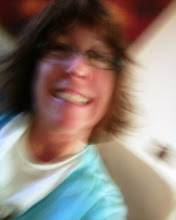 If it hadn't been for Suzanne, our Collections Development manager here @ ERAU-Prescott, I might never have known about Ada Lovelace. What I discovered is fascinating and certainly share-worthy, not only to celebrate Ada Lovelace Day, March 24, 2009, but for women interested in science and technology everywhere.
If it hadn't been for Suzanne, our Collections Development manager here @ ERAU-Prescott, I might never have known about Ada Lovelace. What I discovered is fascinating and certainly share-worthy, not only to celebrate Ada Lovelace Day, March 24, 2009, but for women interested in science and technology everywhere.According to the SDSC (San Diego Supercomputer Center), Ada Lovelace (December 10, 1815 -November 27, 1852, London), "was the daughter of a brief marriage between the Romantic poet Lord Byron and Anne Isabelle Milbanke, who separated from Byron just a month after Ada was born."
"Lady Byron wished her daughter to be unlike her poetical father, and she saw to it that Ada received tutoring in mathematics and music, as disciplines to counter dangerous poetic tendencies (her father's!). But Ada's complex inheritance became apparent as early as 1828 (she was 13 years old!) when she produced the design for a flying machine. It was mathematics that gave her life its wings. "
"One of the gentlemanly scientists of the era, (part of Ada and her mother's social circle) was to become Ada's lifelong friend. Charles Babbage, Lucasian professor of mathematics at Cambridge, was known as the inventor of the Difference Engine, an elaborate calculating machine that operated by the method of finite differences. Ada met Babbage in 1833, when she was just 17, and they began a voluminous correspondence on the topics of mathematics, logic, and ultimately all subjects". It was this relationship with him that eventually lead Ada to refer to herself as "analyst & metaphysician".
"Babbage had made plans in 1834 for a new kind of calculating machine (although the Difference Engine was not finished), an Analytical Engine. His Parliamentary sponsors refused to support a second machine with the first unfinished, but Babbage found sympathy for his new project abroad. In 1842, an Italian mathematician, Louis Menebrea, published a memoir in French on the subject of the Analytical Engine. Babbage enlisted Ada as translator for the memoir, and during a nine-month period in 1842-43, she worked feverishly on the article and a set of Notes she appended to it. These are the source of her enduring fame.
Ada called herself "an Analyst (& Metaphysician)," and the combination was put to use in the Notes. She understood the plans for the device as well as Babbage but was better at articulating its promise. She rightly saw it as what we would call a general-purpose computer. It was suited for "developping [sic] and tabulating any function whatever. . . the engine [is] the material expression of any indefinite function of any degree of generality and complexity." Her Notes anticipate future developments, including computer-generated music. "
To find out more about the woman Babbage called the "Enchantress of Numbers", be sure to check out these books, from which much of the above information is culled: Doris Langley Moore's, Ada: Countess of Lovelace (1977. London: John Murray); Joan Baum's The Calculating Passion of Ada Byron (1986. Archon Books) and Betty A. Toole's Ada, the Enchantress of Numbers (1992. Mill Valley, CA: Strawberry Press).

No comments:
Post a Comment